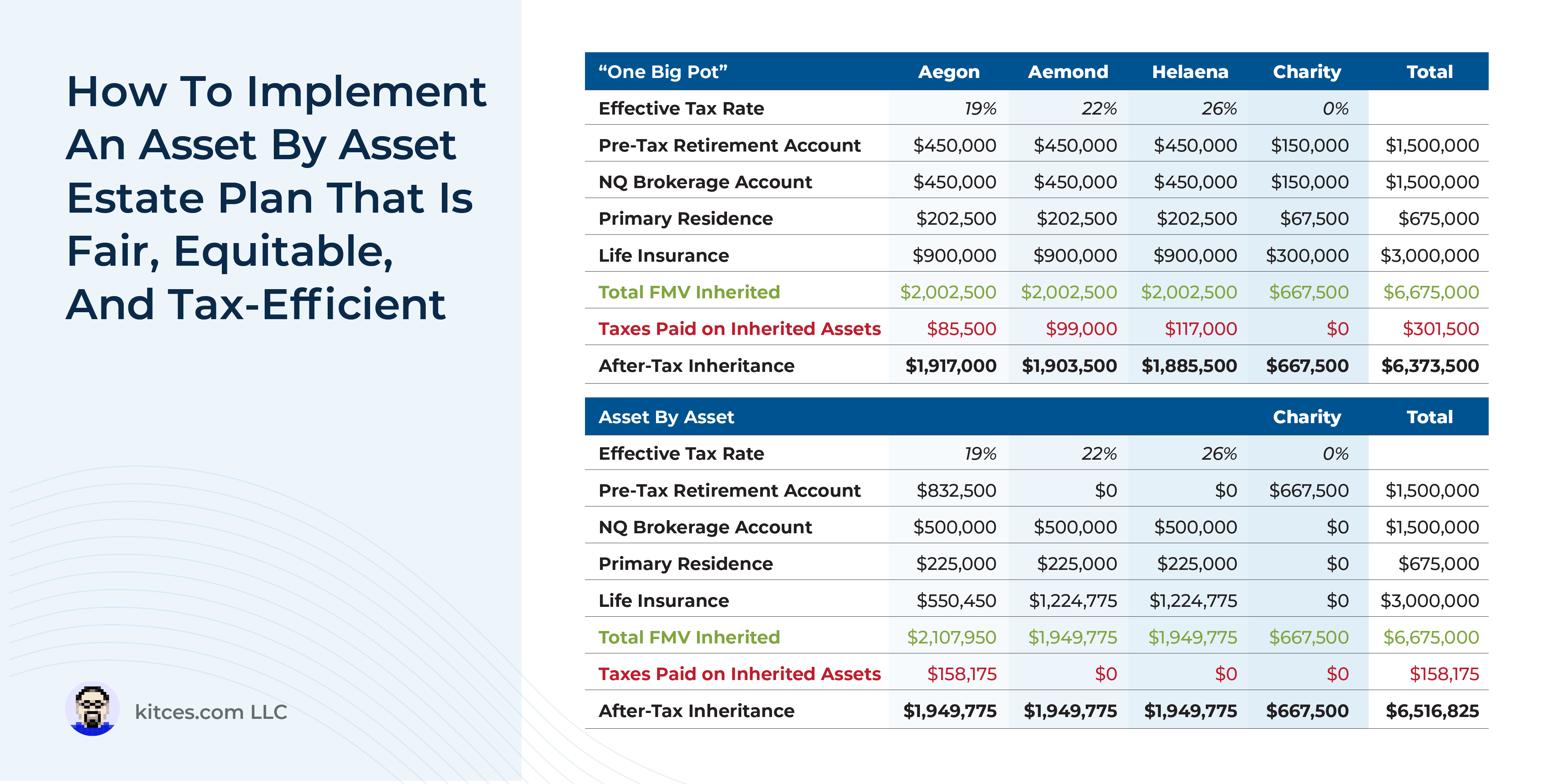Traditionally, people tend to think of their estate as comprising one big ‘pot’ of assets, focusing on the sum of all the assets rather than on each individual asset itself. Consequently, when in estate planning, thinking about how to divide their assets after their death, they often aim to simply apportion the whole pot among their beneficiaries, without regard to the nature of each individual asset.
Although the ‘one big pot’ mindset might be the simplest approach to estate distribution, it may not be the one that results in the most wealth being passed down or the most equitable distribution of assets between each beneficiary. That’s because, depending on the beneficiaries’ individual situations, different types of assets will have different tax characteristics when inherited, which might make particular assets better or worse for different beneficiaries depending on their tax circumstances. For instance, if a traditional IRA is split equally between 2 beneficiaries in different tax brackets (or in different states of residence with different state tax rates), the beneficiary in the higher tax bracket will pay more tax on their share of the IRA (and consequently receive less on an after-tax basis) than the other.
Consequently, it can be beneficial to approach estate planning on an asset-by-asset basis to make the process more equitable and tax efficient by accounting for the disparity of income tax treatment of the different assets in the estate (and the unequal tax circumstances of the beneficiaries who will inherit them). For instance, an estate with a mix of pre-tax retirement assets (taxed upon withdrawal by the beneficiary) and nonqualified assets (which typically receive a step-up in basis and have fewer tax consequences for the beneficiary) can be allocated such that the pre-tax assets are left to the beneficiary with a lower tax rate and the nonqualified assets to the beneficiary with a higher tax rate. Then not only will each beneficiary receive the asset that results in the highest after-tax value to them, but the total after-tax value of all the assets passed down will be higher than if they were each simply divided equally between the beneficiaries.
Notably, an asset-by-asset approach to estate planning isn’t ‘just’ about drafting documents like wills or trusts; it requires full knowledge of the client and the details of their (and their beneficiaries’) financial, tax, and overall life circumstances. Which leaves financial advisors in a unique position to aid in the process of deciding when an asset-by-asset approach will result in sizable tax savings for the estate and beneficiaries and when a traditional ‘split-the-pot’ approach would make more sense. As while estate attorneys may meet with the client only rarely (if at all) after the actual estate documents are drafted, advisors usually have regular recurring meetings with clients, giving advisors the opportunity to keep up with the family’s dynamics and tax situations and recognize when a change would be warranted.
The key point is that, just as clients have different planning needs, goals, and tax circumstances during life, the same applies to their beneficiaries and assets after they’re gone. Incorporating the impact of taxes in the financial planning process to help clients keep more of what they’ve earned in life makes as much sense as using the same approach in the estate planning process, by considering what happens from a tax perspective after the assets reach their intended destination. And, by offering a more equitable distribution scheme for their beneficiaries, advisors can help their clients ensure they pass the most (after-tax) wealth to the next generation!


